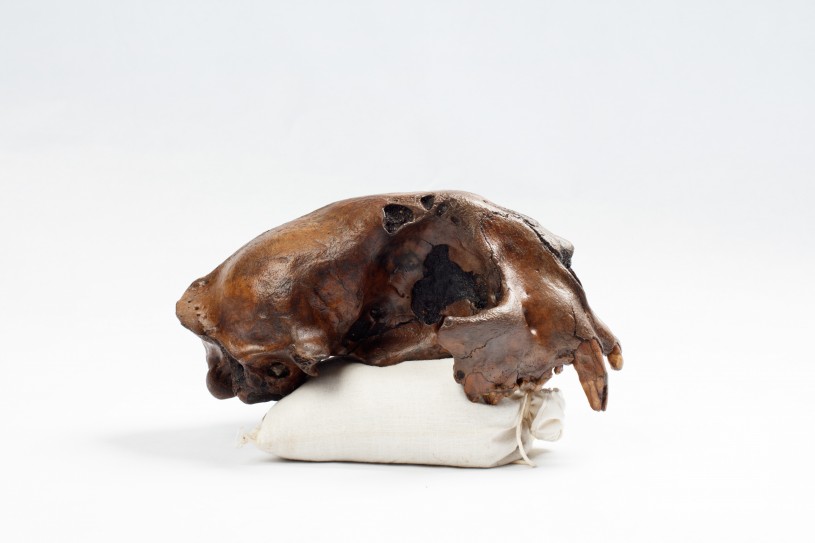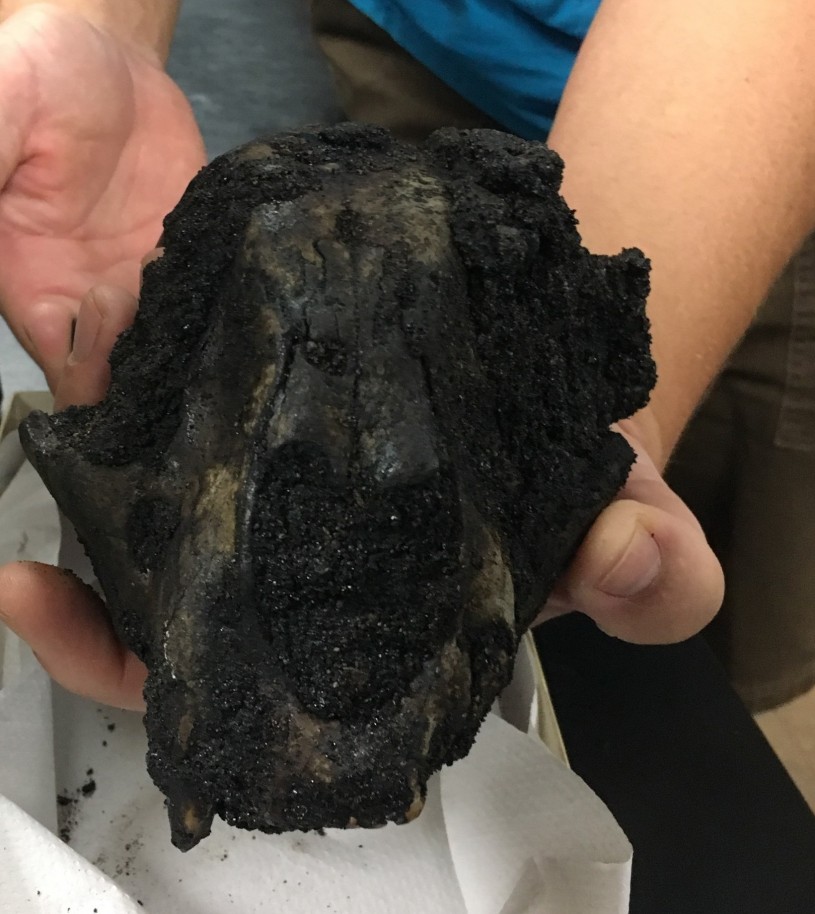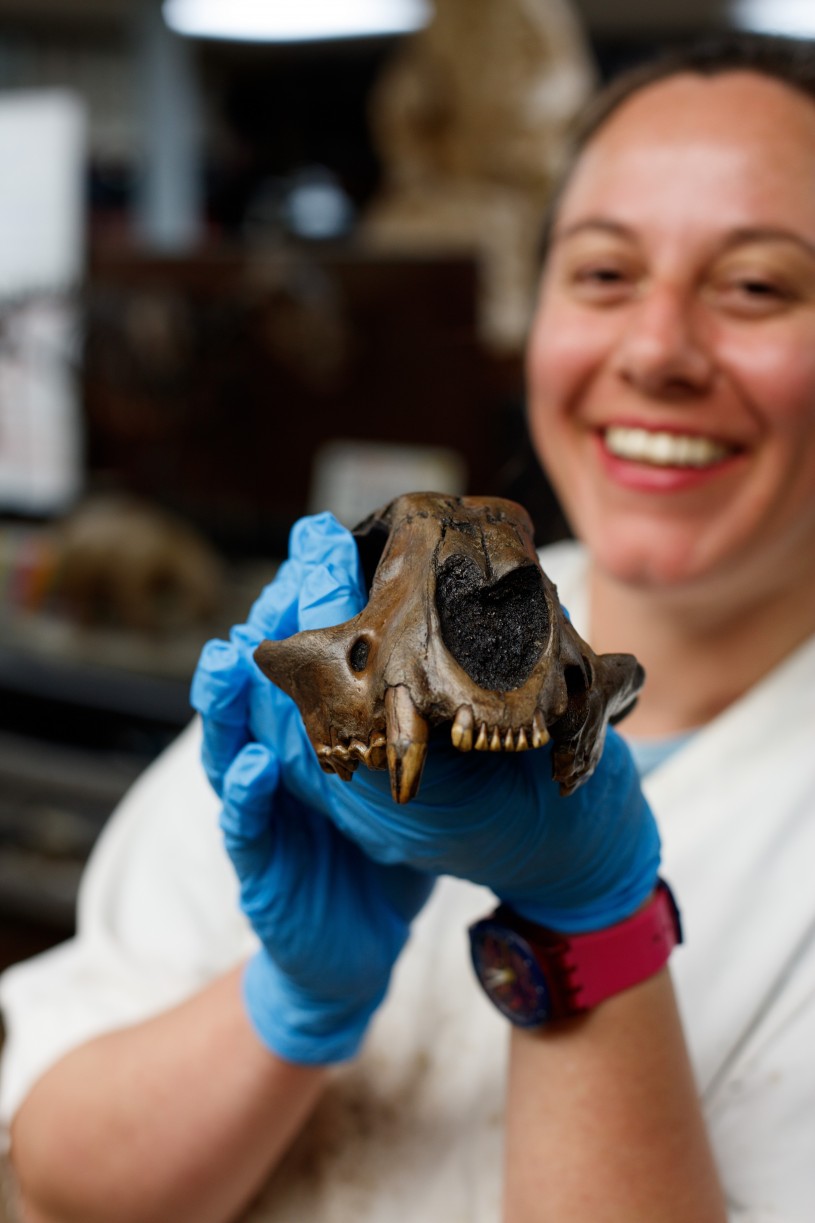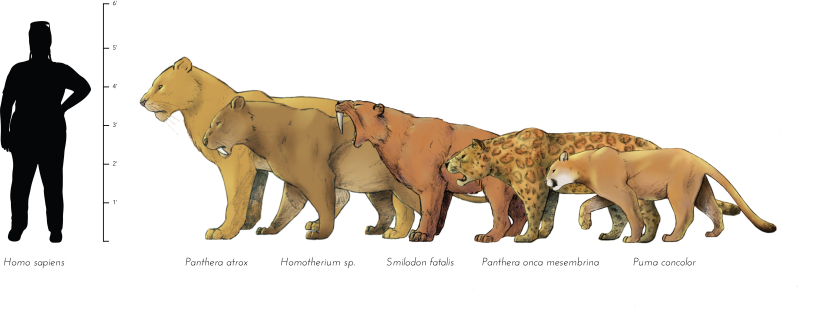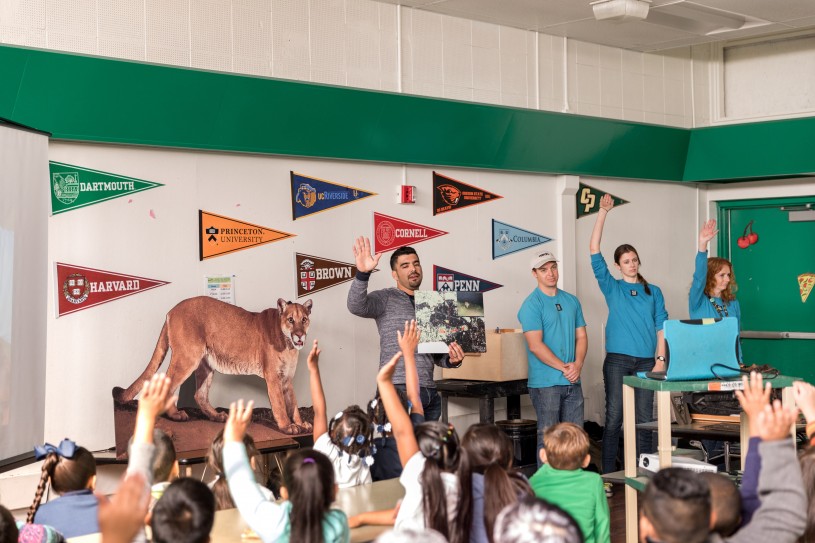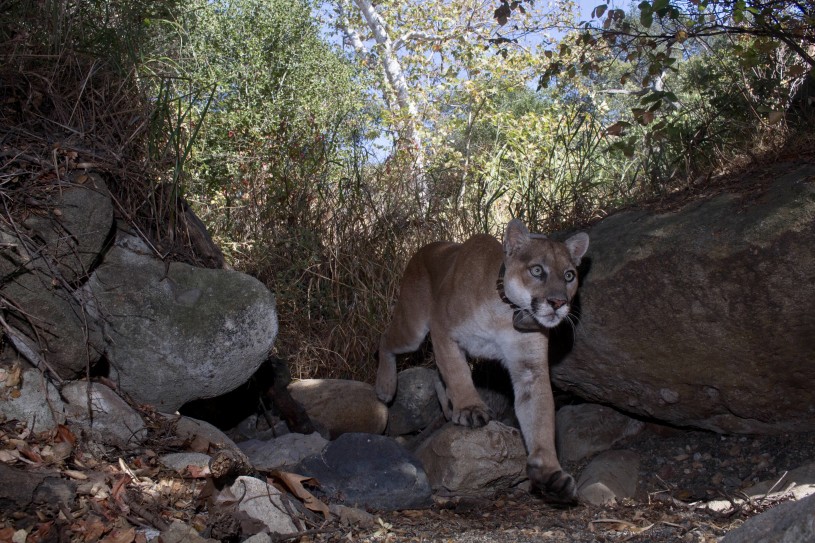Pebbles the Ice Age Puma
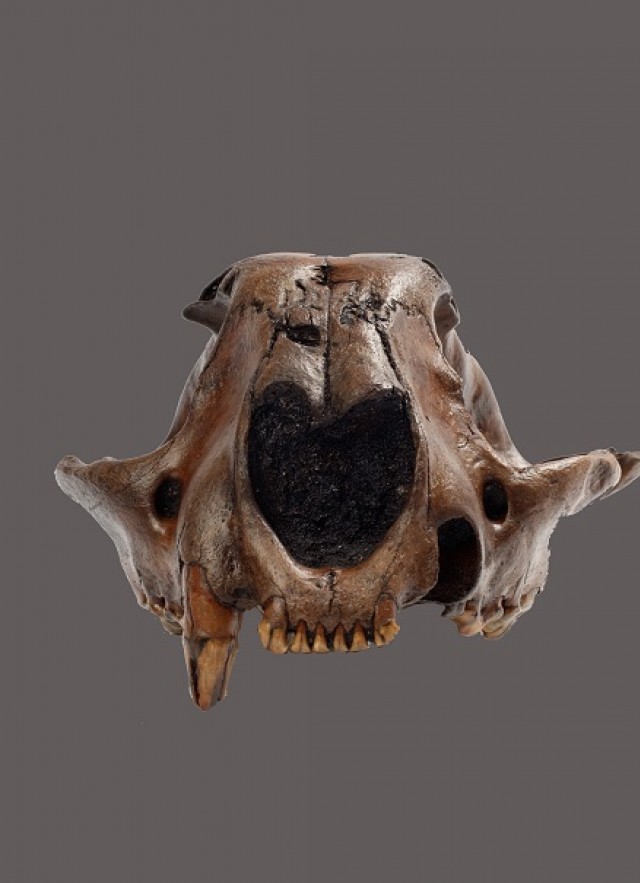
The Naming of an Ice Age Puma Called Pebbles
By Miguel Ordeñana
The discovery of a puma skull at La Brea Tar Pits definitely turned some heads (bad pun/dad joke intended). Being trapped in traffic on Wilshire Blvd. along the “Miracle Mile” (the stretch of Wilshire between Fairfax and La Brea) highlights what a scenic and historically cultural corridor this is for humans. However, the existence of hidden and not-so-hidden tar pits made this same stretch a deadly corridor for mammals during the Ice Age. Pumas are rarely discovered in the asphalt seeps, which make this discovery quite special, especially being found in this town that takes their pumas very seriously. This story details a true example of L.A.’s fascinating Ice Age fossil history intersecting with a special group of elementary students in an inspiring way at a critical time for local puma conservation.
This puma skull was discovered in Project 23 by Preparator, Sean Campbell, while he was excavating fossils for paleontological research at the Museum.
Project 23 involves the excavation of 23 large wooden boxes of asphalt matrix that were recovered during the construction of an underground parking lot at the Los Angeles County Museum of Art (LACMA) next door in 2006. This particular skull was discovered in box 13 sometime during September 2017, and is one of only three puma skulls ever excavated at La Brea with more megafauna fossils than it knows what to do with. Sean was so used to finding certain species over and over again so this uncommon specimen immediately caught his eye.
As I continued exposing more of the specimen, the morphology, or shape of the bones, made it abundantly clear that I was dealing with something rarer than a dire wolf. The specimen was nearly completely exposed by the time I knew exactly what it was. Mountain lions are extremely rare in the fossil record, even at a carnivore trap like La Brea, and we found a nearly complete skull that is approximately 32,000 years old! In the collections we have hundreds of drawers filled with bones from Smilodon fatalis the saber-toothed cat but we only have 4 drawers of mountain lion, with only a couple skulls. ~Sean Campbell
Following Sean’s discovery, the 32,000 year old skull was turned over to Stephany Potze, Fossil Lab Manager at La Brea Tar Pits Museum, to carefully clean and prepare the skull, which according to Stephany was an exciting but delicate process.
The cleaning of this specimen required a very delicate application of a solvent called n-propyl bromide, to prevent the asphalt being over-saturated, as this could have resulted in the nasal bones becoming separated. As a recent resident to Los Angeles, I still marvel at the fact that mountains lions live side-by-side with humans in one of the largest cities in the world, which emphasizes how highly adaptive these felines are - even before the cranium was uncovered at the La Brea Tar Pits, I was following the updates of mountain lion P-22, so to work on a skull of this species which dates to around 32,000 years, was a once in a lifetime experience and career highlight. ~ Stephany Potze
Local pumas have become a hot topic, because unlike in much of their range that has been developed, the L.A. pumas are somehow continuing to battle for survival.
Their adaptability to many different habitat types and their wide dietary breadth allow them to occupy varied habitat across California, and even coexist alongside humans to some extent. Researchers compared the dentition of Ice Age pumas from La Brea Tar Pits to other Ice Age cats, and the results suggested that at least one reason they outlived the other larger cats, Panthera atrox, Homotherium sp., Smilodon fatalis, and Panthera onca (locally extinct) is because pumas were able to consume a more varied diet than the other cats. Another potential reason the Tar Pits have only turned up 3 puma skulls compared to over 2,000 saber-toothed cat individuals is because pumas were smaller and also solitary predators, causing them to occur at lower densities and potentially be displaced by their larger competitors.
However, this resilient species seems to have met its match with immense habitat loss and the creation of wide and busy freeways that act as death traps and risky barriers for movement.
In fact, current research is proving that local L.A. area pumas will likely go extinct within the next 50 years due to the impacts of habitat loss and lack of connectivity across remaining suitable habitat. Fortunately, inspirational stories, such as the story of P-22, has given Angelenos a wake-up call and convinced the L.A. area community that human-wildlife coexistence and urban wildlife conservation should now be bigger priorities. Thanks to some dedicated outreach from many dedicated organizations, including NHMLAC, and campaigns such as the Save L.A. Cougars campaign to build a vegetated wildlife crossing, L.A. pumas may stick around for many generations to come. Many Angelenos take great pride in their local pumas so, the discovery of a new puma fossil is a reason to celebrate and our staff did just that.
After some high-fives our staff decided to share the news via a fossil-naming contest, to capitalize on the local popularity of pumas and build on this education and outreach opportunity.
Nearly 70 submissions were sent in from schools ranging from Pre-K to 12th grade classes from all over the L.A. area. The contest winners would be awarded a trip to La Brea Tar Pits and a Museum staff visit to their school where they would be awarded a presentation to their school and a 3D model of the skull. The top 12 were selected and sent to a cross-departmental group of judges. The winner was unanimous and pretty unexpected. The winners weren’t 12th grade AP or Honor students, but a kindergarten class from Lindbergh Elementary School, which is located within an underserved school district in Lynwood! The winning name was “Pebbles” and Mr. Ramos explains how his class came up with the name.
My students recently learned the names of different sized rocks - boulders being large and pebbles being small. Some students noticed there were lots of pebbles inside the Puma skull so we named her Pebbles. ~Mr. Ramos
As one of the NHMLAC staff members chosen to visit Lindbergh Elementary School, I shared the local and entertaining story of P-22 to educate the students about the urban ecology of local pumas and current conservation efforts. The highlight for the kids was hearing how I discovered P-22 by finding an unexpected photo of a puma butt. The Tar Pits team introduced them to paleontology, honored Mr. Ramos’ class with a 3-D printed model of the skull and a telling of the story of how Pebbles was discovered. After our presentation in the cafeteria, we set up tables in their playground so that we could have meaningful interactions with the rest of the school during their recess periods.
We had one last visit with the winning kindergarten class. We reinforced some lessons that we shared earlier in the cafeteria and they shared their artwork inspired by our presentation. One piece of art caught our eye because it had a familiar quote.
The students later enjoyed a VIP visit to the Tar Pits that included a bus, meet and greet with paleontologists, and behind-the-scenes tours. Mr. Ramos expressed how special the experience was for his students.
My students felt so special. It was truly a day to remember! ~ Mr. Ramos
However, Agnes, our Tar Pits school programs coordinator, perfectly summarized how rejuvenating and heart-warming our interactions with the kindergarteners were for our staff.
We were delighted to host such a passionate group of students. Their visit was filled with amazement, wonder, and curiosity; it was a wonderful group of kids with an amazing teacher. Hopefully we will see a few of them back here in 10 years to volunteer! ~Agnes Novie
The only thing I’ll add is that how this experience really exemplified the relevance of urban paleontological research to urban wildlife conservation by providing a revealing background to continuously changing ecosystems impacted by humans. The stories of Pebbles and P-22 are invaluable for the purposes of capturing the imagination and attention of communities historically disconnected from nature. The hope is that these creative kindergarteners now have the base knowledge needed to be future paleontologists and advocates for our local pumas and other imperiled species that call L.A. home.
